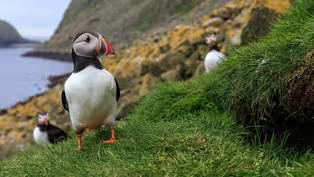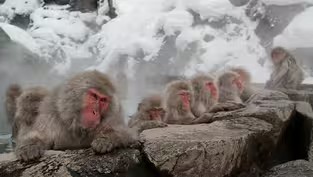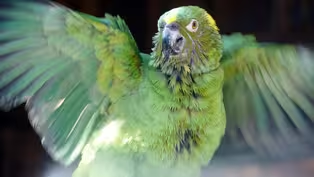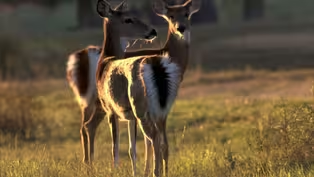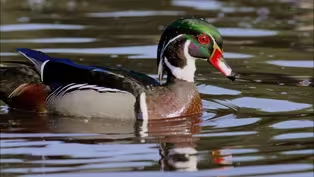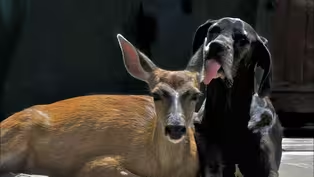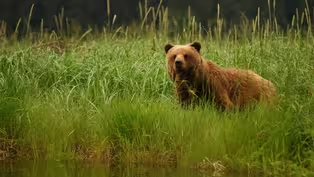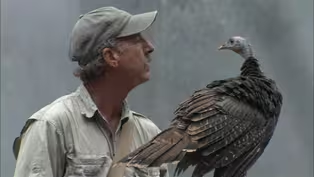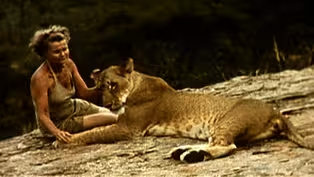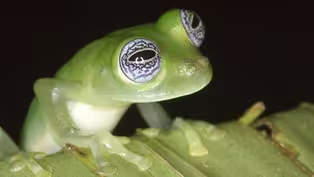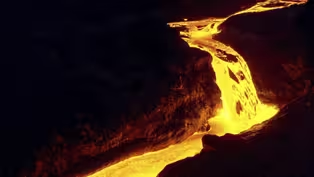
Monkeys on the Edge
Season 8 Episode 22 | 57m 17sVideo has Closed Captions
Brazilian primates face extinction.
Nature looks at the last remnants of the magnificent Atlantic Forest in Brazil. More than half of the species of trees, 70% of the birds, insects and reptile, and nine of fifteen species of primates to be found in the forest are native to this region. Included is the endangered Muriqui Monkey, the largest of the new world primates.
Problems playing video? | Closed Captioning Feedback
Problems playing video? | Closed Captioning Feedback
Major support for NATURE is provided by The Arnhold Family in memory of Henry and Clarisse Arnhold, Sue and Edgar Wachenheim III, The Fairweather Foundation, Charles Rosenblum, Kathy Chiao and...

Monkeys on the Edge
Season 8 Episode 22 | 57m 17sVideo has Closed Captions
Nature looks at the last remnants of the magnificent Atlantic Forest in Brazil. More than half of the species of trees, 70% of the birds, insects and reptile, and nine of fifteen species of primates to be found in the forest are native to this region. Included is the endangered Muriqui Monkey, the largest of the new world primates.
Problems playing video? | Closed Captioning Feedback
How to Watch Nature
Nature is available to stream on pbs.org and the free PBS App, available on iPhone, Apple TV, Android TV, Android smartphones, Amazon Fire TV, Amazon Fire Tablet, Roku, Samsung Smart TV, and Vizio.
Buy Now
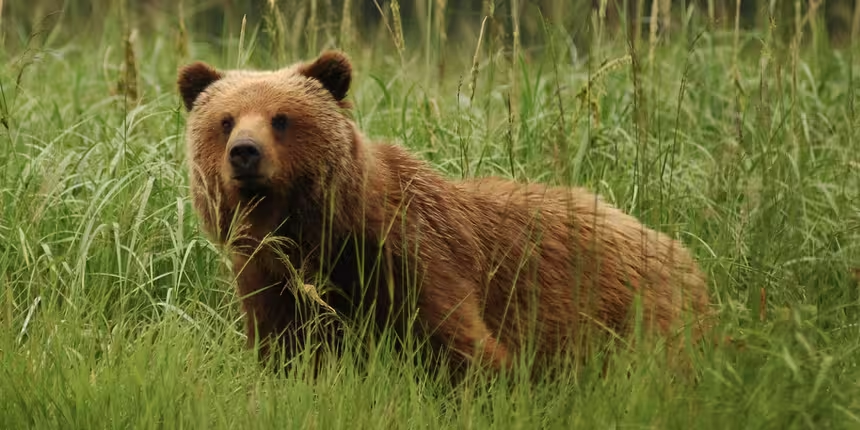
Explore More Ways to Watch
Bring the beauty and wonders of wildlife and natural history into your home with classic NATURE episodes.Providing Support for PBS.org
Learn Moreabout PBS online sponsorshipMore from This Collection
Watch classic NATURE episodes with the PBS station member benefit Passport.
Video has Closed Captions
Animals congregate in huge colonies partly out of necessity and partly for the security. (52m 55s)
Video has Closed Captions
Follow a troop of snow monkeys in Japan to see how they prepare to face the world. (52m 58s)
Video has Closed Captions
Parrots and the bittersweet world they share with humans. (53m 10s)
Video has Closed Captions
Learning about one of our closest neighbors: the white-tailed deer. (53m 10s)
Video has Closed Captions
Take a fascinating look at one of our most familiar birds. (1h 42s)
Video has Closed Captions
Love apparently knows no boundaries in the animal kingdom. (53m 20s)
Video has Closed Captions
Enter a world shaped by bears, trees, and salmon. (50m 9s)
Video has Closed Captions
One man's remarkable experience of raising a group of wild turkey hatchlings to adulthood. (58m 51s)
Elsa's Legacy: The Born Free Story
Video has Closed Captions
The true story that inspired "Born Free". (53m 10s)
Video has Closed Captions
It is the greatest mass extinction since the dinosaurs. (53m 43s)
Video has Closed Captions
Kilauea, on Hawaii's Big Island, is the world's most active volcano. (54m 6s)
Video has Closed Captions
Relationships with cats and dogs are some of the longest and most intimate of our lives. (53m 30s)
Providing Support for PBS.org
Learn Moreabout PBS online sponsorship[wildlife chirping] [gentle music] - [Announcer] "Nature" is made possible by the financial support of viewers like you.
[gentle music] - The destruction of Amazon rainforest in Brazil has made headlines throughout the world, but there's another Brazilian forest farther south that's even more endangered.
The Atlantic coastal forest has been decimated by logging, farming, and the spread of Brazil's largest cities, Rio Degenero and Sao Paulo.
At one time, the Atlantic forest was home to one of the greatest concentrations of monkeys in the world, but in the early '70s, Brazilian primatologists realized that many of them might have disappeared forever.
An intensive search lasting several years revealed that there were a few precious populations surviving in the wild.
They are very rare, very hard to find, and their future is far from assured.
Our film is about three of these groups of monkeys.
They have now become symbols of Brazil's growing conservation movement, and they continue to carry out their monkey business, totally unaware that the same species which brought them to the brink of extinction is now trying desperately to bring them back.
[wildlife chirping] [peaceful music] "Christo Redentor" on Corcovado.
The famous statue looks down upon one of the fastest-growing urban areas in the world, south-eastern Brazil.
[traffic distantly roaring] [gentle music] From Rio to Sao Paulo, a teeming megalopolis is now bursting at the seams.
In the past 20 years, the population has grown by more than 100%.
[crowd chattering] [gentle music] A nation of the young, Brazil abounds in hope.
[crowd chattering] [gentle music] But growth and development have brought pressing problems.
Finding space for nature is one of them.
[traffic roaring] [gentle music] And yet, here, on the edge of urban sprawl, the remnants of a once-magnificent natural world still endure.
[wildlife chirping] [gentle music] Though the wonders of the Amazon may be better known, the Atlantic Forest rivals any on earth.
[wildlife chirping] [gentle music] A spectacular array of animals and plants makes this forest its home, including thousands of species found nowhere else.
[wildlife chirping] [gentle music] Among all the varied creatures which dwell within this forest, the most distinctive and most engaging are the monkeys.
[wildlife chirping] [gentle music] From the marmosets, among the smallest in the world, to the muriqui, the biggest monkey in South America, the Atlantic Forest is a paradise for primates.
[wildlife chirping] [gentle music] But this is a fragile paradise, a precious forest that is rapidly disappearing.
Many of its inhabitants may soon become extinct.
[wildlife chirping] [gentle music] During the wetter periods of the last half million years, the forests of the Amazon and the Atlantic Coast of Brazil probably were joined together.
[gentle music] During dry spells, the forest contracted, leaving the two areas widely separated, as they are today.
[wildlife chirping] [gentle music] This was the wild primeval forest that the first European explorers found when they reached Brazil in the early 16th century.
Amerigo Vespucci described the Atlantic Forest as "a vision of paradise."
[wildlife chirping] And, later, Charles Darwin marveled at what seemed to him "one of the finest forests on Earth", "a great, untidy hothouse," brimming with life.
[wildlife chirping] [gentle music] It was this dense, green world which the Botucudo Indians of Brazil believed to be invincible, eternal.
They were wrong.
[somber music] The Atlantic forest once stretched unbroken for 2,000 miles along the coast.
Over the past 400 years, it has shrunk by at least 90%, replaced by farms, factories, and cities.
[somber music] [traffic roaring] A generation ago, this was a lush virgin forest.
[traffic roaring] [somber music] Industry continues to take over what little remains of the Atlantic forest.
[somber music] A single tree is the sole survivor of the jungle which once flourished on this coastal plain.
[somber music] No natural region in all of South America has suffered more abuse.
[somber music] [wildlife chirping] And yet, in the fragments of forest that remain untouched, a special world still lingers, a testament to what was, and a reminder of what may yet be lost.
[somber music] [wildlife chirping] It's morning in a mountain valley north of Rio.
[wildlife chirping] Unaware of the human world a mere stone throw away, the residents of this forest begin their daily routine.
[wildlife chirping] Until recently, the muriqui, or woolly spider monkey, was feared extinct.
Scientists were thrilled to learn there were still a few left, like these on the plantation of Feliciano Abdala.
[wildlife chirping] Among the rarest of the primates, the muriquis are confined exclusively to this corner of Brazil.
Poaching and habitat destruction have left only a few hundred.
The muriqui is rarely seen and even more rarely photographed.
[wildlife chirping] [gentle music] Beautifully adapted to their forest home, they travel with amazing agility and speed through the tangled highway of the trees.
[wildlife chirping] [gentle music] Few other primates are able to move by this hand-over-hand method, called brachiation, and walk on all fours as well.
[monkeys chirping] It's September, early spring in the Atlantic Forest, and a muriqui infant, a few months old, is just beginning to explore its world.
The mother will keep her youngster close to her until, like these adolescents, it can romp in the treetops unattended.
[wildlife chirping] [gentle music] But there are more important things to do in the treetops.
In springtime, tender buds await the muriquis.
[wildlife chirping] [gentle music] No single food can satisfy all the monkeys' needs, and the search for favorite items keeps them on the move.
As they move, their constant calls keep the group together.
[monkeys chittering] Leaves make up a large part of the muriqui's diet.
Though a low-energy food, they're abundant enough to make up in quantity what they lack in quality.
[monkeys chittering] While its mother forages, the infant makes its first tentative attempts to find food on its own.
[monkeys chittering] The hook-like hands and spindly arms of the muriqui serve it well while feeding, but an even more practical device is the sturdy, prehensile tail.
[monkeys chittering] This arboreal adaptation enables the muriqui to keep both its hands and its feet free while feeding.
[monkeys chittering] It's long, muscular tail is used like another hand, as added insurance when traveling high above the ground.
[monkeys chittering] The muriqui shares its treetop world with another leaf-eating specialist, the three-toed sloth, a strict vegetarian with a preference for fresh green leaves.
[wildlife chirping] This prehensile-tailed porcupine is also adapted to a secure life in the jungle canopy.
[wildlife chirping] Howlers are one of the loudest of all animals, but loudness does not always guarantee superiority.
The muriquis feed first on the choicest vegetation.
A passive bunch, the muriquis rarely need to use threats or displays of aggression to keep the brown howlers from moving in.
The howlers wait for the muriquis to finish feeding.
[monkeys chittering] Then they take their turn.
[howler distantly calling] Like the muriquis, the brown howlers are found only in Brazil's Atlantic Forest.
They too are endangered.
[howler distantly calling] This spring, there's a new addition to the howler family.
Everyday, there is something new to learn about life in the treetops.
[wildlife chirping] The brown howler is also endowed with a fifth hand that proves useful when it's time to hang on and eat leaves at the same time.
[wildlife chirping] The muriquis often visit the same trees year after year.
When in season, flowers are an important source of protein, and a real treat.
While feeding on the blossoms, the muriquis may pick up pollen grains.
These are then dispersed from tree to tree as the monkeys move through the forest.
[wildlife chirping] In this way, they may aid the propagation of the very trees upon which they themselves depend.
By late morning, their stomachs bloated with leaves, the muriquis, as if on cue, stop their foraging.
Now, at midday, the forest falls silent.
In the lull, many of the wild creatures take time out for a siesta.
[gentle music] As the monkeys doze, special bacteria in their digestive tracts go to work, breaking down the masses of greenery they have gorged upon through the morning.
[wildlife chirping] The process cannot be hurried, and, because of this, the muriquis spend more than half the daylight hours resting.
The howlers do the same.
Only the young seem to find nap time an unwelcome interruption of the day's adventures.
[peaceful music] [animals chittering] By early afternoon, the muriquis resume the quest for food, but a wide gap separates the group from its goal.
The possibility of a 60-foot fall doesn't seem to deter this juvenile from taking the plunge.
[gentle music] [monkeys chittering] An adult, heavier and less agile, uses its weight to sway itself farther along.
[gentle music] [monkeys chittering] Each muriqui adopts its own distinctive style in tackling the challenge.
[gentle music] [monkeys chittering] [howlers hooting] A swift stream cuts through the mountain refuge.
By its edge, a troop of howlers feasts on fruit.
[wildlife chirping] But this treat is also prized by the muriquis, and they soon work their way through the canopy.
As the muriquis move in, the howlers move out.
[monkeys calling] No show of force is necessary.
[wildlife chirping] The muriquis settle in for feeding, and, again, the howlers must wait.
[wildlife chirping] But some forest residents benefit from the munching muriquis.
These sloppy eaters provide many animals with a sample of food from the canopy.
[animals chirping] The coatimundi spends most of its day in search of food.
Insects and lizards have to be hunted, so this gift from above is a welcome surprise.
[wildlife chirping] The muriquis are more than mere consumers of the forest's resources.
By dispersing seeds, they help to ensure the survival of this community.
[wildlife chirping] The tufted capuchin is also found here.
It too moves aside when the muriquis feed.
[wildlife chirping] When the feast is over, a muriqui cleans its teeth by gnawing the sweet bark of a vine.
[wildlife chirping] [gentle music] Although the monkeys are quite at home in this small patch of forest, it's a home which does not belong to them.
[gentle music] [wildlife chirping] Since 1944, plantation owner Feliciano Abdala has preserved this 2,000-acre oasis as a refuge.
Now, 80 years old, he's proud of his decision.
[Feliciano speaking in foreign language] For nearly a decade, Karen Strier has been studying the muriquis in Senhor Feliciano's forest.
She is one of the few, and one of the lucky scientists, who've been able to watch these monkeys in the wild.
[leaves rustling] [wildlife chirping] This is a formidable challenge, since the monkeys range across more than two miles of difficult terrain in a single day.
Four months were required before the muriquis would permit her to approach them, and, even now, after many years of research, she is thrilled by each encounter.
- [Karen] I'll be looking and looking, and then, suddenly, I'll see a silhouette against the sky.
"Aha!
It's the muriquis!"
And it's a sense of coming home or finding someone familiar, or seeing old friends after a long time.
I know them as individuals.
After following the same group for so many years, we've actually been able to document individual life histories.
For example, this female, Nina, is five and a half years old.
I saw her the first day that she was born.
She's playful and friendly, and there's always something new to see, new questions to answer, and watching the interactions between members of the same family is something that you can't see in a year or a two year long study.
- [George] Anthropologist Steve Ferrari came to this forest in 1983 to study a monkey even more elusive than the muriqui.
[wildlife chirping] [whimsical music] Until Ferrari began his work, very little was know about this exceedingly rare primate.
[wildlife chirping] The buffy-headed marmoset, one of the smallest monkeys in the world.
Only eight inches long, it's even smaller than many of the forest birds, like the lineated woodpecker, the black-necked aracari, and the rufous-tailed jacamar.
[bird chirps] The marmosets are specialized for feeding on a unique resource, the sap and gum produced by tropical trees.
[wildlife chirping] To exploit this sugar-rich food, the monkeys have evolved special teeth, designed for gouging bark and scooping out the gum.
[wildlife chirping] The gum is relished by the marmosets and jealously guarded.
[wildlife chirping] These tiny monkeys are vulnerable to a wide range of predators.
They are chronically nervous and always on the alert.
[wildlife chirping] The pygmy owl could snatch a newborn infant.
[foreboding music] But the plumbeous kite is a far more serious concern.
[foreboding music] [monkey crying] The bird-like cries of the monkeys signal the group to take cover.
The twisted maze of the trees provides perfect places to hide.
[wildlife chirping] Huddling reinforces the bonds that keep the group together.
[wildlife chirping] The marmosets make frequent forays to the ground in search of food.
Here, they forage for insects, a major source of protein.
[wildlife chirping] In contrast to eating sap from the tree, the marmoset must be swift in order to capture a movable feast.
Protein is hard to come by in the forest, and insects are a necessary supplement to their sugary diet.
[wildlife chirping] In their search for food, the monkeys brave the very borders of their forest and beyond.
[foreboding music] Roads now separate their home into fragments.
Roads are beneficial to humans, but not to marmosets.
[foreboding music] Whether on the ground or in the air, this crossing requires great skill.
[foreboding music] [wildlife chirping] [frog croaking] [monkeys chittering] Shrill calls signal food.
[monkeys chittering] Frogs are hard to catch, a rare delicacy for the monkeys.
[monkeys chittering] Youngsters are still fine-tuning their hunting skills.
Sometimes it's easier to steal instead.
[monkeys chittering] But marmoset society has its own rules.
The hierarchy determines who eats first.
[monkeys chittering] [gentle music] In these dry days of late September, the monkeys seek out natural reservoirs, which store fresh water from one rainfall to the next.
[wildlife chirping] [gentle music] Marmoset etiquette requires that each must wait its turn to drink.
[wildlife chirping] To learn more about these and other unique species, a modest research station was established on Senhor Feliciano's land, attracting scientists from all over the world.
Primatologist Russell Mittermeier first arrived here in the late '70s to conduct a survey of primates in the forest.
He believes that Brazilian landowners could play an important part in ensuring the future of the Atlantic Forest.
He feels Senhor Feliciano is a good role model.
- [Russell] He's made a tremendous contribution by conserving this forest for 45 years.
If every landowner could do what Senhor Feliciano has done, it would make a major contribution to conservation in Brazil and the entire South American continent.
The Atlantic Forest is one of the three highest priority ecosystems for conservation on the entire planet.
This region is one of the top priority areas that we really have to focus on over the next three, four, or five years.
Otherwise, it's going to disappear entirely.
- Senhor Feliciano is committed to conservation, but his sons who will one day inherit the land may not share his commitment.
Although efforts are now underway to purchase this forest and make it a reserve, its future is still uncertain.
For the moment, the muriquis and the other monkeys here are doing well, and if protection can be insured, there's reason to hope that they will continue to prosper.
[wildlife chirping] [gentle music] As the afternoon hours draw to a close, the muriquis prepare to settle in for the night.
[wildlife chirping] [gentle music] They are secure for now, but the forest where they live is little more than a lonely island in a sea of farms and plantations.
[chickens clucking] In rural areas of southeastern Brazil, many farmers and their families eke out a frugal living on land which was once Atlantic Forest.
[chickens clucking] For them, the demands of the present outweigh concerns for the future.
[children chattering] [cattle mooing] The needs of cattle come before those of muriquis, marmosets, and brown howlers.
[cattle mooing] [saw buzzing] To provide firewood for cooking and to fuel the smelters of the big steel mills, the mountain forests are still being steadily logged.
[saw buzzing] [somber music] The effects are starkly apparent.
[somber music] South of Senhor Feliciano's plantation are a few more precious remnants of the Atlantic forest.
[somber music] The fragmentation of a once enormous forest is especially evident on the narrow lowland plain that lies between the coastal mountains and the sea.
[traffic roaring] Only 60 miles from Rio, these lowland forests are in the direct path of development.
In 1974, the Brazilian government decided to protect some of these forests before it was too late, and they established a sanctuary here.
[wildlife chirping] The Poco das Antas Reserve, with its tangled swamps, is a small remnant of what was once a lush rainforest.
[wildlife chirping] It is now the last stronghold of a very colorful, very elusive primate, the remarkable golden lion tamarin, one of the world's most critically endangered monkeys, and one of the most striking.
Though marked with black dye for identification, the lion tamarins here lead a life that's free and unfettered, a life seemingly unaffected by the proximity of civilization.
[wildlife chirping] These small monkeys, barely nine inches long and weighing only about a pound, have tiny babies.
This infant is only four inches long.
[wildlife chirping] Golden lion tamarins often have twins, and it's frequently the father that takes them wherever he goes.
They live as a family, and both take excellent care of their young.
[wildlife chirping] [gentle music] In all seasons, the forest overflows with life.
[wildlife chirping] [gentle music] Many of these species are found only in south-eastern Brazil.
[wildlife chirping] [gentle music] The maned sloth is one of the rarest of all living creatures.
It has suffered acutely from habitat destruction.
Now, there are now only a few hundred of its kind left in the wild.
[gentle music] Adapted to an arboreal, slow-paced lifestyle, the sloth is a very successful tree-dweller.
It's just that its trees are disappearing.
[wildlife chirping] [gentle music] The golden lion tamarins are quite the opposite.
Their fast-paced way of life is fueled by a wide range of high-energy foods.
[wildlife chirping] The fruits of palms are eagerly consumed.
[wildlife chirping] Pulpy fruits are special favorites, but fruit alone cannot provide a balanced diet.
[wildlife chirping] A little searching provides other essential foods.
The forest floor is alive with protein-rich insects.
[wildlife chirping] But bromeliads, with their overlapping leaves, provide the best hunting grounds.
The leaves form a watertight tank that traps rainwater and insect larvae.
[wildlife chirping] The bromeliads are an open invitation to the dexterous fingers and slender arms of the monkeys.
[wildlife chirping] When not pursuing a meal, the juveniles spend their time like most other children.
[wildlife chirping] They are rarely injured in these bouts, which may simply serve to let off steam.
[monkeys chittering] But life in the forest is not all fun and games.
[birds cawing] The adults are always on the look-out for potential dangers.
[wildlife chirping] The savanna vulture is mainly a carrion eater, but it will take a small animal if it can.
This time, it proves to be no threat.
[wildlife chirping] [foreboding music] The boa constrictor is a more serious concern.
[wildlife chirping] [foreboding music] Though, from time to time, a tamarin may wind up in the jaws of a snake, the monkeys' skills in the air give them the edge over the earth-bound predator.
[wildlife chirping] [foreboding music] Safely out of harm's way, the tamarins huddle in their treetop home.
[wildlife chirping] [gentle music] Grooming each other is an important part of family bonding.
[wildlife chirping] [gentle music] For field biologists, the Poco das Antas Reserve can be a frustrating place to work, but it is precisely because of this soggy terrain that it was spared the plough years ago.
[wildlife chirping] The radio transmitter this monkey wears permits ecologist James Dietz, with Brazilian researcher Otavio Jose Narciso, to track the tiny animal into the very heart of the green maze where it lives.
[wildlife chirping] [radio beeps] [researchers speak in foreign language] From the dye-marks on the monkeys, the scientists can recognize many of the more than 200 individuals, and identify the family group they belong to.
[researchers speaking in foreign language] [monkey chitters] Devra Kleiman is Research Director of the National Zoo in Washington.
She heads a project which has successfully released captive-bred tamarins into the wild.
Researchers are studying how these captive-bred monkeys respond to calls recorded from wild monkeys.
This information may help to perfect the technique of introducing golden lion tamarins into the wild.
It's hoped that this project will help increase their numbers in the forest.
[wildlife chirping] But for these efforts to succeed, the monkeys must have a home that's protected.
[wildlife chirping] [foreboding music] Even here, their status is far from secure.
A dam, on the edge of the reserve, if developed as planned, would drown part of the forest.
[foreboding music] Farmland surrounds the refuge, and pastures encroach upon its borders.
[foreboding music] [cattle mooing] To improve the browsing for livestock, neighboring ranchers regularly set fire to their fields, in the process, engulfing the lion tamarin reserve in smoke.
[foreboding music] [fire crackling] In February, 1990, a grass fire, burning out of control, threatened to destroy the reserve itself.
Had it not been stopped in time, this single blaze would have wiped out the last substantial wild population of the golden lion tamarin.
[foreboding music] [fire crackling] They were spared this time, but, one day, another fire may, overnight, transform the lion tamarin's last retreat into grazing land for cattle.
[foreboding music] So much of the reserve has been destroyed that the Brazilian government has started a reforestation project.
The environmental agency, IBAMA, is working to replant pastureland with trees.
[wildlife chirping] But this project runs on a shoestring budget.
Dionisio Pessamilio, director of the reserve, must do much of the work himself.
At least 20 years may pass before this sapling hosts a family of lion tamarins, but it's a beginning.
[gentle music] Another major project was started in the 1960s, with the establishment of the Rio Primate Center, now located in the coastal mountains north of Rio.
[monkeys chittering] Here, monkeys of several endangered species, including the muriqui, are maintained.
The founder of the facility, Adelmar Coimbra Filho, hopes, in time, to restock protected areas of the Atlantic Forest with animals bred here at the center.
[monkeys chittering] [Adelmar speaking in foreign language] The challenge Coimbra Filho faces is great, but he's hopeful that soon the center will be home to the first muriqui born in captivity.
The results with the golden lion tamarins have been encouraging.
Several of the monkeys reared here at the Primate Center have already been released successfully in the reserve at Poco das Antas.
[traffic roars] Conservationists hope that, one day, there will be a string of refuges to provide a safe home not only for the magnificent golden monkeys of the treetops, but for all of the other vulnerable life of Brazil's Atlantic Forest.
[wildlife chirping] [gentle music] If they are protected, these small islands of wild habitat may serve as centers of regrowth for the Atlantic Forest.
[wildlife chirping] [gentle music] October has brought the first spring rains, a welcome event.
[thunder distantly rumbling] [wildlife chirping] The rain brings new life to the Atlantic Forest.
[gentle music] [wildlife chirping] Among Brazil's vast resources are the vitality and spirit of its people.
The country has achieved much in its push for progress.
It has grown rapidly, joining the ranks of the industrialized nations.
[traffic roaring] [gentle music] But it is also saddled with staggering problems.
Problems of overpopulation.
Problems of debilitating international debt.
Problems of grinding poverty.
[chickens clucking] Problems of finding space for nature.
[crowd chattering] Brazilians from all walks of life have begun to demonstrate their concern for the preservation of their irreplaceable natural heritage.
[wildlife chirping] [gentle music] But, today, the threat of extinction hangs over almost all the wildlife which lives in the Atlantic Forest.
All the wild creatures which cling to life in Brazil's imperiled paradise, all the living treasures of an enchanted world whose hidden wonders have only now begun to be revealed.
[wildlife chirping] [gentle music] In the spring of 1990, shortly after our filming was completed, scientists announced that a new species of monkey had been discovered in the Atlantic Forest the black-faced lion tamarin, closely related to the golden tamarin seen in our film.
It was discovered on an island off Brazil's coast.
Little is known about this rare new monkey, except that it's lucky to be alive.
There may be only a few dozen left, but they have survived near one of the most densely populated regions in South America.
It's like discovering a new animal in the suburbs of Los Angeles.
To find a whole new primate species today is immensely exciting and important.
It's proof that we still have so much to learn from these precious forests and so much to lose if we destroy them.
I'm George Page for "Nature."
- [Announcer] "Nature" is made possible by the financial support of viewers like you.
[gentle music] [bright musical jingle]

- Science and Nature

Explore scientific discoveries on television's most acclaimed science documentary series.













Support for PBS provided by:
Major support for NATURE is provided by The Arnhold Family in memory of Henry and Clarisse Arnhold, Sue and Edgar Wachenheim III, The Fairweather Foundation, Charles Rosenblum, Kathy Chiao and...
